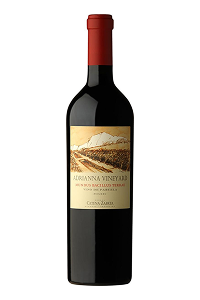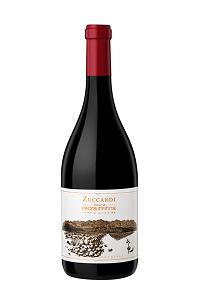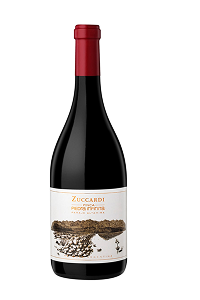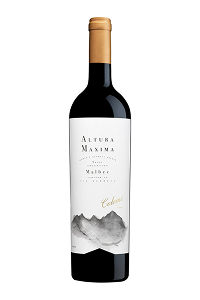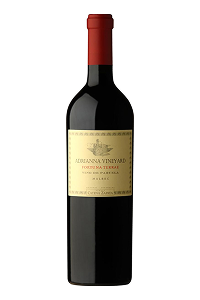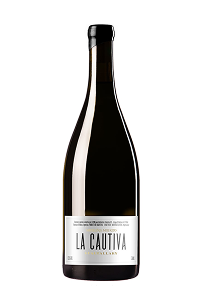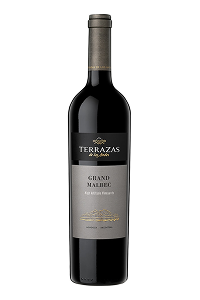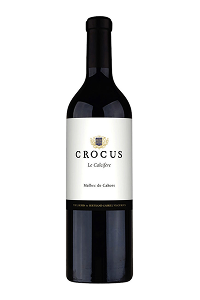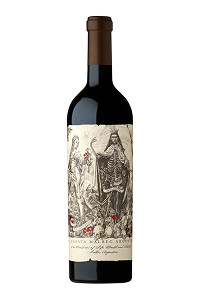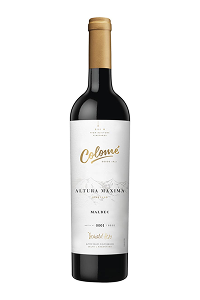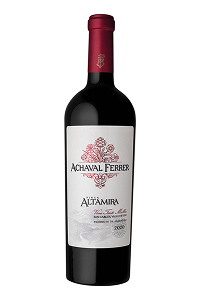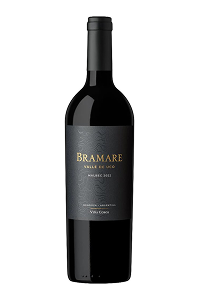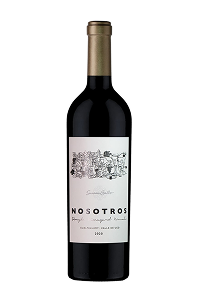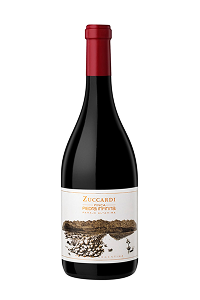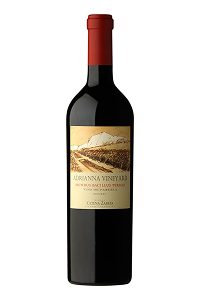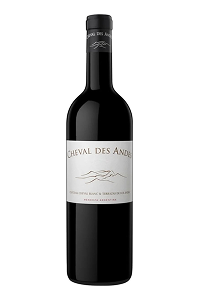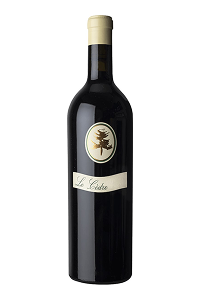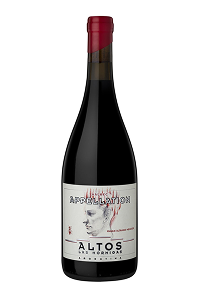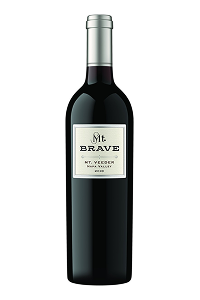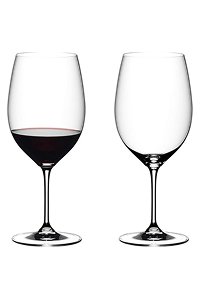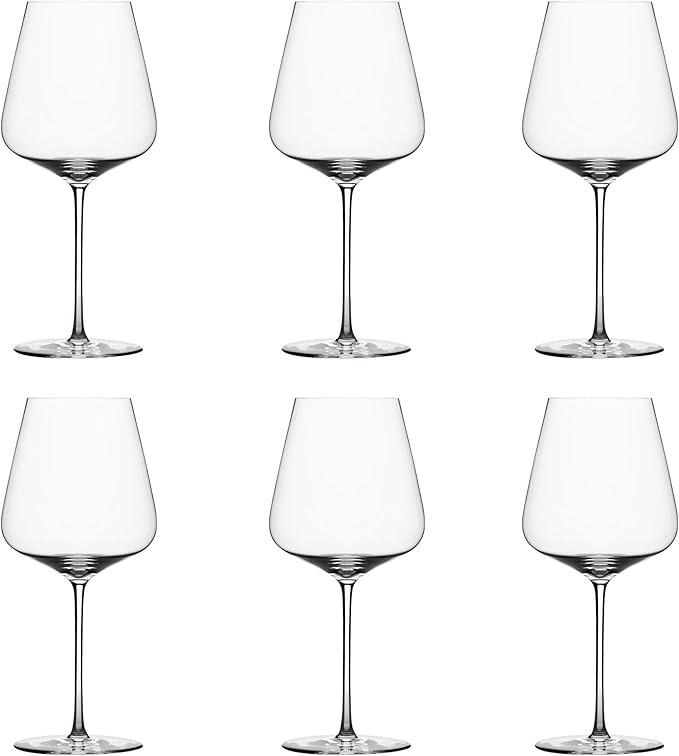Exploring Malbec: a curated guide to Argentina’s iconic red
Despite originating from France, Malbec is now Argentina’s flagship red wine, appreciated for its velvety texture and deep flavors of berries, red plum and spices. In this guide, we’ll uncover everything you need to know about Malbec wine, as well as food pairings and our picks of the best bottles available this year.
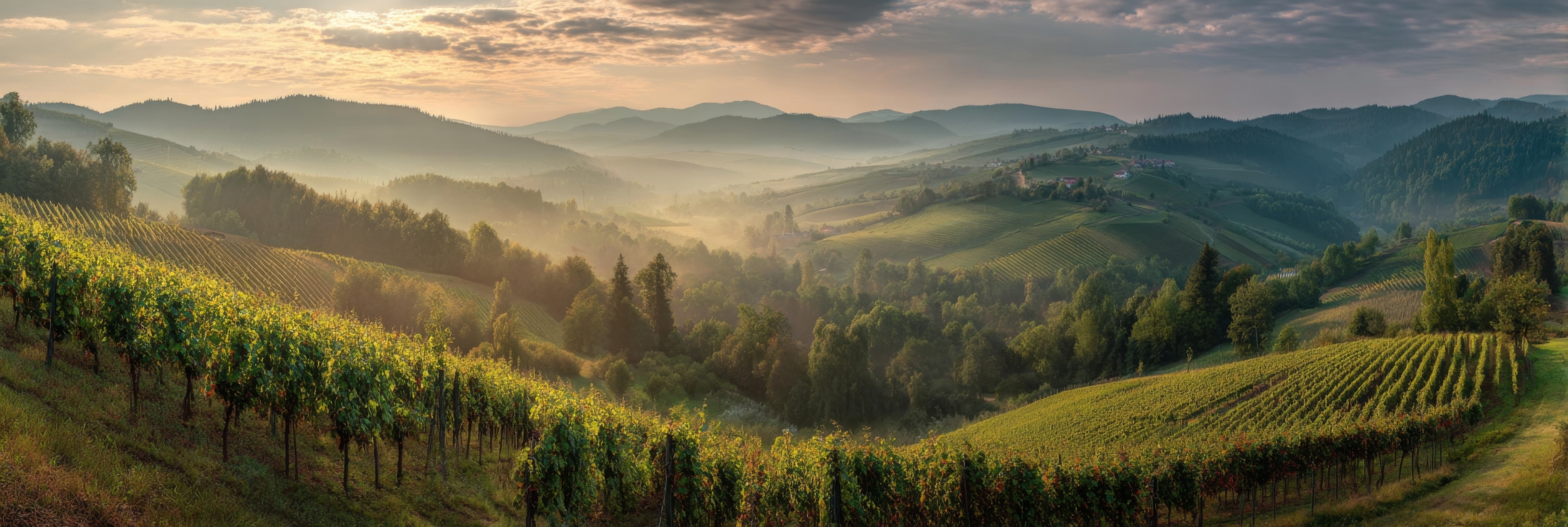
By
Last updated:
Table of Contents
10 Most recommended Malbec wine bottles
Adrianna Vineyard Mundus Bacillus Terrae Malbec – Catena Zapata 2021
Argentina
Adrianna Vineyard River Malbec – Catena Zapata 2021
Argentina
Finca Piedra Infinita Altamira – Familia Zuccardi Vineyards 2019
Argentina
Finca Piedra Infinita Altamira – Familia Zuccardi Vineyards 2017
Altura Maxima Malbec – Bodega Colome 2015
Argentina
Adrianna Vineyard Fortuna Terrae Malbec – Catena Zapata 2021
Argentina
J. Alberto Malbec – Bodega Noemia de Patagonia 2022
Argentina
La Cautiva – Michelini I Mufatto 2021
Argentina
Grand Malbec – Terrazas de los Andes 2021
Argentina
Le Calcifere Malbec de Cahors – Crocus 2017
France
The top 10 most recommended Malbec wines list has been carefully curated by our team, drawing on the expertise of leading wine critics as well as widespread customer preferences and ratings. This ensures that our recommendations are based on a broad consensus and truly resonate with wine lovers. These selections showcase Argentina’s iconic red in all its diversity, from the powerful and sun drenched expressions of Mendoza to the more refined and elegant styles found in Patagonia. For the truly curious, we’ve also included a distinguished French Malbec wine from Cahors, offering a fascinating comparison to its Argentine counterpart.
A quick look at Malbec wine characteristics
| Malbec Red Wine | Details |
|---|---|
| Grape Variety | Malbec |
| Origin | Cahors (France), now widespread in Argentina |
| Serving Temperature | 60 to 64°F (15 to 18° C) |
| Decanting | 30 minutes to 1 hour for younger wines, up to 2 hours for aged and premium bottles |
| Aging Potential | 15+ years, depending on terroir and brand |
| Flavor Profile | Ripe figs, plum, dark berries, cherry, cocoa, tobacco and black pepper |
| Structure | Medium to full bodied, moderate to high tannins and balanced acidity |
| Alcohol Content | 13% to 15% with slight variations according to producer |
| Ideal Glass | Bordeaux style glasses to concentrate aromas and soften tannins |
| Food Pairing | Grilled/charred meats, beef empanadas, aged hard cheeses, Argentine asado roasted vegetables, dark chocolate |
| Top Communes | Cahors (France) and Mendoza (Argentina) Napa Valley and Washington State (USA) |
| Best Producers | Argentina: Catena Zapata, Bodega Colomé, Norton, Achával-Ferrer, Luigi Bosca, Zuccardi – France: Chateaux du Cèdre, Clos Triguedina |
The Malbec wine taste is that of a bold, fruit forward wine with a smoky finish. However, that often only applies to Argentinian Malbec. Malbec from France is a world of difference, with leathery notes and a green, savory bitterness.
But what really influences the Malbec tasting notes?
For Argentine bottlings, one of the most defining elements is altitude. Vines planted at high altitudes (like the ones of Altura Máxima, one of the highest vineyards in the world) produce great Malbec wine with vivid acidity, delicate floral aromas and a more elegant structure. In contrast, Malbec grown on lower altitude sites tends to be more dense, fuller in body and more sweet in flavor. Nevertheless, independently from where the grape is grown, there are typical tasting notes of Malbec red wine that we can find amongst almost all bottles, such as ripe dark fruits (blackberries, black cherries and plum), spice notes (mainly black pepper, vanilla, cocoa and dill), together with earthy tones of leather, sweeter tobacco, mocha and gravel.
Best Malbec wine brands from around the world
Winemakers across the globe have crafted their own interpretations of this remarkable grape. In its native France, Malbec has become less widely cultivated due its delicate nature and sensitivity to climate, yet Argentina has embraced it fully becoming its modern stronghold and the benchmark for global quality. Below, we’ve gathered some of the best Malbec wine brands whose wines consistently stand out for quality and character.
1. Bodega Catena Zapata. The story of this acclaimed brand began in 1902, when Nicola Catena planted the first Malbec vineyard in Mendoza. His grandson, Nicolás Zapata Catena, pioneered the introduction of planting Malbec vines at high altitudes, a practice which placed them on the wine map worldwide. In 2023, Bodega Catena Zapata was awarded the title of “World’s Best Vineyards,” and here is one of our top picks:
Argentino Vineyard Malbec 2022 – Catena Zapata – Argentina
2. Bodega Colomé. Founded in 1831 by Nicolás Severo de Isasmendi y Echalar, the Spanish Governor of Salta, Bodega Colomé is Argentina’s oldest continuously operating winery. In 1854, his daughter Ascensión brought the first French Malbec and Cabernet Sauvignon vines to Colomé, before the phylloxera happened. They are known for making some of the finest, limited quantity high altitude wines in the world, including our recommended pick below:
Altura Maxima Malbec 2019 – Bodega Colome – Argentina
3. Achával-Ferrer. Located in the Andes foothills near the Mendoza and Tunuyán rivers, Achaval Ferrer is well renowned for its Fincas trilogy, a set of terroir expressive Malbecs crafted from old vine grapes grown in three distinct vineyard sites. This producer stands out in the Argentinian winemaking scene for its world class fresh and elegant wines, ranking second place on the IWSR’s Drinks Market Analysis list of Ultra Premium Brands from Argentina in 2023. For a true taste of the winery’s philosophy, try the 2020 Finca Altamira Malbec.
Finca Altamira Malbec 2020 – Achával Ferrer – Argentina
What influences the Malbec red wine prices?
The price spectrum for quality Malbec is remarkably wide, ranging from approachable bottles around $30 to rare collector’s editions exceeding $1,000. Several factors influence where a wine falls within this range. Vineyards located at higher altitudes command a 20-30% premium thanks to the exceptional fruit quality and climate conditions. Hand harvesting and extended oak aging also demand greater labor and precision, which translates into higher costs. Vintage variation adds another layer: outstanding years like 2016 and 2018 are particularly sought after by collectors, often driving prices up by 15-25%. Brand prestige has its own weight too with renowned names such as Catena Zapata carrying price premiums of 40-50% for their exceptional Malbecs. Finally, aging potential is a key marker of value, wines built to evolve gracefully over a decade or more can cost two to three times as much. The table below illustrates how these quality indicators translate into real world pricing across different price categories.
Good Malbec wines by price point
1. Entry Level Malbec: Bramare Uco Valley Malbec 2022 – Vina Cobos – Argentina
2. Mid Tier Malbec: Nosotros Single Vineyard Nomade Malbec 2020 – Susana Balbo – Argentina
3. Premium Malbec: Finca Piedra Infinita Altamira 2019 – Familia Zuccardi Vineyards – Argentina
4. Luxury Best Malbec Wine: Adrianna Vineyard Mundus Bacillus Terrae Malbec 2021 – Catena Zapata – Argentina
Best Malbec wines to elevate your collection
Once viewed as a simple table wine, Malbec has evolved into one of the most collectible red wines of the modern era. The most age worthy Malbecs often originate from appellations such as Luján de Cuyo and Altamira, where DOC recognition signals meticulous vineyard management. Vineyards situated at high altitudes (above 1,000 meters) like those of Adrianna or Altamira, produce grapes with concentrated fruit and firm structure that allow for graceful aging. Bottles that are most coveted by collectors often showcase Malbec skillfully blended with other noble varieties such as Cabernet Sauvignon, Merlot or Tannat, in varying proportions to enhance depth and longevity. Production remains intentionally small, with winemakers focusing on capturing the individuality of each parcel rather than volume.
Below, we have handpicked 4 of the best Malbec wines that belong in a collector’s cellar alongside Bordeaux and Champagne.
Adrianna Vineyard Mundus Bacillus Terrae Malbec 2021 – Catena Zapata – Argentina
Adrianna Vineyard River Malbec 2021 – Catena Zapata – Argentina
Finca Piedra Infinita Altamira 2019 – Familia Zuccardi Vineyards – Argentina
Cheval des Andes 2020 – Mendoza – Argentina
Fun fact: The Catena Zapata Adrianna Vineyard Mundus Bacillus Terrae Malbec 2016 from the high altitude Adrianna vineyard in Uco Valley, Mendoza, has sold for $3000+ at auction, making it the world’s most expensive Malbec!
Malbec red wine’s best vintage years
Malbec vintages vary widely in character with some years producing wines best enjoyed young and others offering exceptional aging potential. Cooler seasons typically yield more structured wines with firm tannins and vibrant acidity, ideal for long term cellaring, while warmer years produce softer and fruit driven styles suited for early drinking. Among the recent standouts, 2016 remains a reference vintage: a long, cool growing season delivered Malbecs of remarkable balance, freshness and depth, capable of evolving for 20 years or more.
For a detailed look at the best Malbec vintage consult the Argentine wine vintage chart highlighting the top performing harvests. The table below the key vintages that have defined Malbec’s modern reputation.
| Malbec Vintage | Recommended Malbec | Vintage Characteristics |
|---|---|---|
| 2022 | Old Vine Malbec 2022 – Luca | A roller coaster year with a relatively cool growing season. The wines from this vintage are highly expressive with optimal acidity and ripeness. |
| 2021 | Intense notes of musk, black locust and orange flowers | Cool temperatures and rain slowed down the ripening of the grapes, leading to concentrated wines with lower alcohol levels. |
| 2019 | Grand Malbec 2019 – Cuvelier Los Andes – Argentina | A year with fewer harvests than 2018 but remarkably intense wines. |
| 2018 | Terroir Series Finca Coletto Malbec 2018 – Trapiche – Argentina | Nearly ideal growing conditions resulting in well structured wines with smooth tannins and ripe fruit flavors. |
| 2017 | Concreto Malbec 2022 – Familia Zuccardi Vineyards – Argentina | Cooler temperatures and dry weather led to the development of intensely flavored grapes with well preserved acidity. |
| 2016 | Château Leret Monpezat Malbec 2016 – Georges Vigouroux – France | An ideal growing season with cool and dry weather drenched in sunshine. Surely one of the best recent vintages. |
How to serve Malbec wine like a pro
As with other fine reds, temperature, aeration, and proper glassware are key to unlocking Malbec’s full character. Here’s some simple tips to enjoy this beautiful red as a real pro:
- Store bottles horizontally in a cool, dark place at about 55°F (13°C).
- When it’s time to pour, serve at a temperature between 60 to 65°F (16-18°C).
- Younger Malbecs should be decanted for about 30 to 60 minutes.
- Aged Malbecs (10+ years) should be decanted for at least 2+ hours to fully reveal their complexity.
Pro tip: after opening, use a vacuum wine stopper to help preserve Malbec’s freshness for up to 5 days. If you plan to keep it longer, about a week, pour the remaining wine into a smaller, airtight bottle to reduce contact with oxygen and slow down oxidation.
Best Malbec wine food pairings to try in 2025
Malbec’s bold structure and smooth texture make it an exceptionally food friendly red. The key is to match the wine’s depth and ripeness with dishes that carry equal flavor intensity.
A young Malbec pairs beautifully with smoky ribs, juicy burgers or bacon empanadas, classic barbecue food that complements its vibrant fruit and spice. An aged Malbec, on the other hand, shines alongside slow braised short ribs, earthy mushroom risotto or even a square of dark chocolate to highlight its mature, velvety character. Use this guide to find the right Malbec for your meal and elevate every bite.
| Food | Best Malbec Wine Bottle | Aged | Type & Structure |
|---|---|---|---|
| BBQ chicken, turkey, duck, pork | Nicasia Vineyard Malbec 2021 – Catena Zapata – Argentina | 1-3 years | Complex and expressive medium bodied wine with notes of ripe blueberries and cassis. |
| Empanadas (beef, lamb) & cured meats | Malbec 2018 – Siesta – Argentina | 3-5 years | Sleek and smooth tannins with aromas of blueberry, cocoa and sweet spice. |
| Spiced dark chocolate desserts & cherry compote | Sin Limites Organic Malbec 2020 – BenMarco | 2-4 years | Notes of blackberry and dried cherry with earthy undertones, fine grained tannins and fresh acidity. |
| Aged cheeses (Manchego, Aged Gouda, Cheddar) | Single Vineyard Altamira Malbec 2021 – Argento – Argentina | 1-3 years | Juicy, elegant medium to full bodied wine layered with red and blue fruit notes. |
| Pasta, risotto and baked casseroles | Gran Medalla Malbec 2020 – Trapiche | 3-5 years | Full bodied and concentrated wine with excellent acidity, dark chocolate and spice notes. |
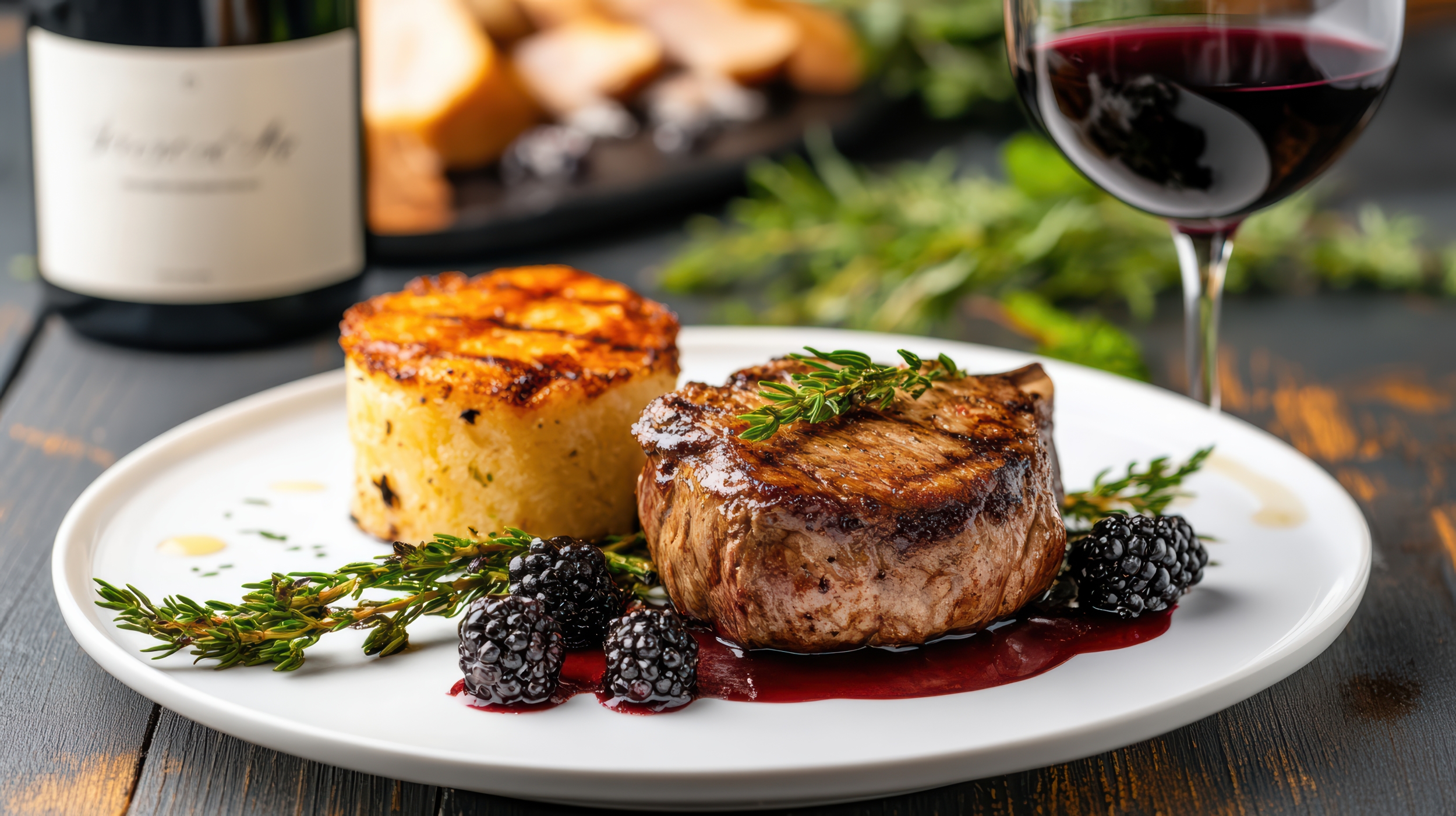
Malbec wine beginner? No stress
Malbec is one of the best red wines for beginners. It offers bold, fruity flavors with soft tannins and a smooth texture that make it easy to enjoy if compared to other heavier reds. Here are some simple tips get the best out of your bottle:
- Choose vintages released within the last two to four years as they’re more approachable and balanced.
- Serve red Malbec slightly chilled, around 60 to 65°F ( 16-18°C) to bring out its fruit and spice notes.
- Decant for about 30 minutes to let the aromas open up.
- Pair Malbec reds with grilled meats, aged cheeses or smoky vegetables.
The table below shows two ways to enjoy Malbec: one bright and youthful, the other aged and complex. Try both to see which style you prefer.
| Malbec Wine Style | Our Recommendation | Best to Pair with |
|---|---|---|
| Young Malbec (under 5 yrs) | Malbec 2021 – Catena Alta – Argentina | Barbecue short ribs, grilled ribeye, spicy sausages, roasted red peppers and beef empanadas |
| Mature Malbec (5-10+ yrs) | Pulenta X Gran Malbec 2018 – Pulenta Estate – Argentina | Lamb shank, truffle risotto, duck confit, aged Manchego or roasted vegetables |
What is Malbec red wine and how is it made?
Malbec is a full bodied red wine produced from the self named grape with a signature dark purple color and magenta rim that makes it stand out during blind tastings. It is originally from France, mainly planted in Bordeaux and used as a blending grape in Bordeaux wines. While in France Malbec’s popularity died down due to its vulnerability to various diseases, the thick skinned grape has now found a home in Argentina, where it was introduced in the mid 19th Century quickly becoming the country’s most celebrated grape.
Malbec red wines follow traditional wine making methods:
- Viticulture requires great care because Malbec is susceptible to various grape diseases such as frost, coulure, rot and mildew. Wine growers have developed new clones and vineyard management techniques that reduce the occurrence of these problems as well as improve yield. The grape also performs fabulously in regions with higher elevations, whereas it may taste too flabby if grown in warmer, low elevation regions.
- Once the grape reaches optimal ripeness (usually in late summer or early autumn), the grapes are harvested, destemmed and gently crushed to release their juice while keeping some skins intact since the skins are crucial for the wine’s dark purple hue and tannic structure.
- Fermentation is typically carried out in stainless steel or concrete tanks with the addition of yeasts. The process lasts between 7 to 14 days with the grape skins remaining in contact with the juice to extract color, tannins and aromatic compounds. Winemakers often perform regular punch downs or pump overs to ensure even extraction. After the primary fermentation, malolactic fermentation takes place to convert the malic acid in the wine to lactic acid for a smoother and creamier texture.
- After fermentation, Malbec is often aged in oak barrels according to the structure that the winemaker wants to achieve: few months for fresher and fruit driven styles, over a year for more layered and age worthy wines. Oak aging softens the tannins but also adds subtle notes of vanilla, spice and toast.
- Blending is more common for French bottles (Bordeaux red blends) while Malbec red wines from Argentina are bottled as single varietals (although some blending might occur by blending different vineyard lots to achieve balance and complexity). The resulting wine is clarified and filtered to remove sediments and remaining yeasts from the bottle. The inky red wine is then bottled and ready for commercial release.
Did you know? Malbec is one of the few grapes that undergoes a process called “cold soaking”, a signature Argentine technique where, before fermentation, grapes sit at chilly temperatures for 2 to 5 days, just the time necessary to extract color but avoiding the extraction of harsh tannins.
Malbec regions around the world
Malbec thrives best in sunny climates, which help to soften its tannins and ripen the thick skinned fruits. It performs exceptionally well at high altitudes and notable terroirs for its production include Argentina, France, the United States, Chile, Australia and New Zealand. In these regions, it is typically used in red blends, although many single varietal Malbecs are widely produced in Argentina. Let’s have a look at some of the world’s top regions for Malbec wine production.
French Malbec wine
Historically, Malbec was a major grape in Bordeaux, adding depth and fruit notes to Bordeaux wine blends before its popularity declined. Malbec is a vulnerable variety that is susceptible to many grape diseases and most vines were wiped out by a severe frost in 1956. The majority of winemakers chose to replace their vines with Merlot, Cabernet Franc and other varieties. Today, French Malbec wine is most popular in the Cahors AOC, where it comprises at least 70% of the wine blend. It is also grown in the Loire Valley and it is used as a blending grape in several AOCs as well as in meritages and Bordeaux blends. Below, you will find a prime example of Cahors Malbec wine:
Chȃteau du Cèdre 2020 – Cahors – France
Malbec from Argentina
The Argentine Mendoza region takes the world lead among Malbec wine producers, crafting elite expressions from its high altitude vineyards. Nicolás Catena Zapata, in particular, transformed the status of Argentinian Malbec through his experiments, being the first person to plant a vineyard at almost 5,000 feet (1,500 m) in 1994. Here is a look at one of our favorite Mendoza Argentina Malbec wines from this brand:
Altos Las Hormigas Appellation Paraje Altamira Malbec 2021
Malbec wine in the US
The most significant Malbec plantings in the US can be found in California, Washington and Colorado. The grape is most widely used for blending, often featured in Meritage Bordeaux style blends. It is also produced as a single varietal wine with general flavors of ripe fruit including blackberry, plum and cherries. Some of the best California Malbec wine is crafted from grapes grown in the unique vineyards of Napa Valley
Mt. Brave Malbec 2019
What are the types of Malbec wine?
While Malbec is a single grape variety, there are distinct styles and types of Malbec wine that arise from differences in winemaking technique, region, altitude and climate. Here’s a clear breakdown:
In addition to the above Malbec wines, this wine can also be categorized as:
Fun fact: Malbec wine grapes are amongst the highest in anthocyanins (natural anti-oxidant pigments)! They have five times more anthocyanins than Merlot, which gives them that signature inky color!
How Malbec wine compares to other popular reds
For those who enjoy Malbec’s velvety texture and ripe fruit character, a few other classic reds offer a similar sense of richness, each shaped by its own terroir and character.
Each of these wines echoes an aspect of Malbec’s character while expressing its own distinct sense of place and personality.
| Wine / Grape | Top Wine | Comparison |
|---|---|---|
| Malbec vs Merlot | Napa Valley Merlot 2021 – Duckhorn – California (US) | Merlot is often softer and smoother than Malbec, with flavors of red berries, plum and herbs. |
| Malbec vs Cabernet | Cabernet Sauvignon 2020 – Jordan Vineyard & Winery – California (US) | Cabernet Sauvignon is a more structured wine than Malbec, with firm tannins and bolder flavors of blackcurrant and green bell pepper. |
| Malbec vs Shiraz | Blue Eyed Boy Shiraz 2022 – Mollydooker | Shiraz offers an intensely spicy experience, with bolder flavors and a higher alcohol content than Malbec. |
Which is the right glass for Malbec wine?
The perfect Malbec wine glass follows the shape of a Bordeaux glass: a tall elegant bowl, wide enough to allow the wine to breathe while naturally guiding the wine to the center of the palate, with a gently tapered rim that enhances the aromas of rich, dark fruits and spices.
To elevate your tasting experience, we’ve handpicked a few high end wine glasses perfectly suited for Malbec, each available on Amazon with convenient same day or next day delivery.
Riedel Vinum Bordeaux Glasses, Set of 2 21.5 oz
Zalto Denk’Art Bordeaux Glass, Set of 6
Riedel Sommeliers Bordeaux Gran Cru
Pro tip: do not over aerate Malbec wines using excessively wide bowled glasses, such as the ones used for Burgundy style wines.
FAQs Malbec wine
Which is the best Malbec wine to buy?
The best Malbec wine to buy is Catena Zapata’s Argentino Vineyard Malbec 2009. This legendary bottle unveils a deep, full bodied texture with opulent layers of blackberry, plum and violet, accented by subtle spice. Refined through aging in French oak, it delivers remarkable harmony, depth and sophistication, a true collector’s gem. Several other wines featured in our top 10 Malbec wines share a comparable level of flavor intensity offering an equally captivating quality.
What country has the best Malbec wine?
Argentina is the country with the best Malbec wines worldwide. The Mendoza region, with its high altitude vineyards, optimal sunlight and mineral alluvial soils, yields wines of striking intensity, bursting with ripe fruit, velvety tannins and layered complexity. While France, particularly Cahors, is the grape’s historic birthplace, it is in Argentina that Malbec has reached its finest expression, refined to perfection through modern viticulture and meticulous craftsmanship.
Which Italian wine is most like Malbec?
The Italian wine closest to Malbec is Amarone della Valpolicella. While Malbec is celebrated for its bold, fruit driven character and plush tannins, Amarone delivers a comparably opulent experience, bursting with notes of dark fruit, dried cherry and warming spice. Crafted through the traditional appassimento method, which involves partially drying the grapes before fermentation, Amarone achieves remarkable concentration, a full bodied structure, elevated alcohol and a luxuriously velvety texture.
Is red Malbec a dry wine?
Yes, Malbec is a dry red wine. Despite its lush flavors of blackberry, plum and cherry, it contains very little residual sugar, classifying it firmly as dry. Its supple tannins and balanced acidity make it very approachable while the dryness enhances its versatility at the table, pairing beautifully with grilled meats, aged cheeses and rich, savory dishes.
Is Malbec a red wine?
Yes, Malbec is primarily a red wine but there are small scale productions of rosé and even white Malbec that showcase the grape’s versatility. Rosé Malbecs are typically crafted using a short skin contact, resulting in vibrant pink hues, fresh red berry flavor and a crisp, lively profile. White Malbecs are made by gently pressing the grapes and fermenting only the clear juice, producing wines with floral aromas, citrus undertones and a delicate mineral finish. Though rare, these expressions highlight Malbec’s adaptability and offer a refreshing alternative to its traditional bold red style.
Where is Malbec from?
Malbec originated in France, in the Cahors region, where it is traditionally called Côt. In its homeland, the grape produces structured, earthy wines with firm tannins and deep color. Over time, however, Argentina, especially the Mendoza region, has become the global reference point for Malbec red wines, thanks to its high altitude vineyards that yield ripe, concentrated and expressive wines. While countries like Chile and the United States also cultivate Malbec successfully, Argentina remains the undisputed leader, having elevated the varietal to international fame with its signature bold yet silky style.
Is Malbec wine sweet?
No, Malbec is not a sweet wine, it is classified as dry, containing very little residual sugar. While a few sweeter versions exist, often made from late harvested grapes, the vast majority of Malbec wines are dry in style. Their rich flavors of blackberry, plum and dark cherry can create a perceived sweetness but this comes from the ripeness of the fruit rather than actual sugar content. Oak aging may introduce hints of vanilla, mocha or chocolate yet the wine itself remains firmly on the dry side of the spectrum.
Is Malbec a full bodied wine?
Malbec is generally a medium to full bodied dry red wine, though its exact style can vary depending on the winemaking method and growing conditions. In cooler climates or higher altitudes (like those in the Uco Valley) Malbec tends to show greater freshness, vibrant acidity and floral aromatics resulting in a more elegant, medium bodied expression. In warmer regions or with extended oak aging, the wine develops a richer, fuller body with denser tannins, riper fruit flavors and a velvety texture. Winemaking choices such as fermentation temperature, maceration time and barrel type all influence its final structure and intensity, making Malbec one of the most versatile red varieties in the world.
What is a good Malbec wine to buy?
A good Malbec to buy is the Catena Zapata Adrianna Vineyard Malbec 2021, known for its balance, fine tannins and mineral complexity. Other highly rated options, listed by price point, include Bramare Uco Valley 2022 (entry level), Susana Balbo Nosotros 2020 (mid tier) and Zuccardi Finca Piedra Infinita 2019 (premium), all recognized for their quality and consistent expression of Argentina’s Mendoza terroir.
What are the best Malbec wine brands?
Top Malbec wine brands include Catena Zapata (Argentina), renowned for its high altitude vineyards and complex wines that define the country’s modern style. Achaval-Ferrer (Argentina) focuses on concentrated, single vineyard expressions with remarkable purity and depth. Bodega Colomé, one of Argentina’s oldest wineries, produces distinctive high elevation Malbecs from Salta, noted for their intensity and freshness. In France, Château du Cèdre (Cahors) crafts structured, earthy Malbecs with long aging potential,while Cheval des Andes, a prestigious collaboration between Château Cheval Blanc and Terrazas de los Andes, delivers one of the finest Bordeaux inspired Malbec blends on the market.
How long does an open bottle of Malbec wine last?
Once opened, a bottle of Malbec typically remains enjoyable for three to five days if properly sealed and stored in the refrigerator. Lighter, fruit focused styles tend to lose freshness sooner (around three days) while fuller bodied or oak aged examples can stay vibrant for up to five. To preserve its character longer, use a vacuum pump or argon spray, though the finest flavors are best appreciated within two days of opening.
Should Malbec be chilled?
Malbec shows best when served slightly cooler than room temperature, ideally between 60 and 65°F (16-18°C). If the bottle has been kept at room temperature (around 70°F or higher), a brief 15 to 20 minute chill in the refrigerator helps bring out balance and freshness, softening the alcohol warmth and enhancing fruit expression. Younger or lighter bodied Malbecs benefit from an even cooler serving temperature, around 55°F (13°C), though over chilling should be avoided, as it can dull the wine’s aromatics.
